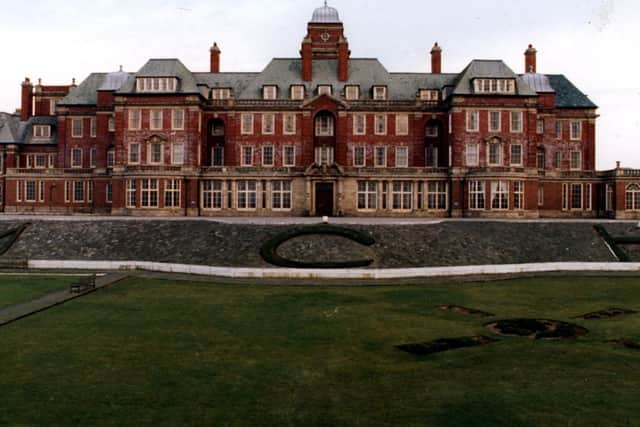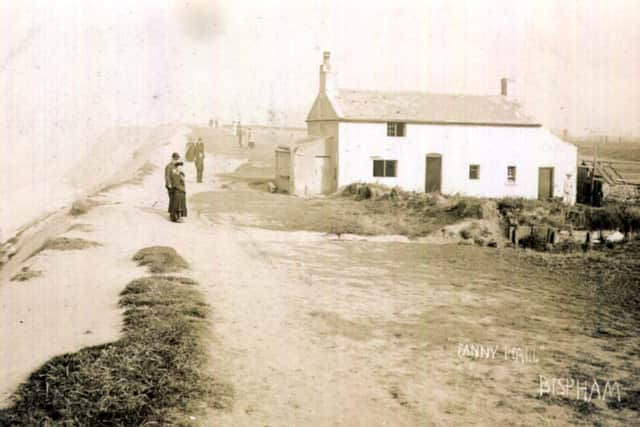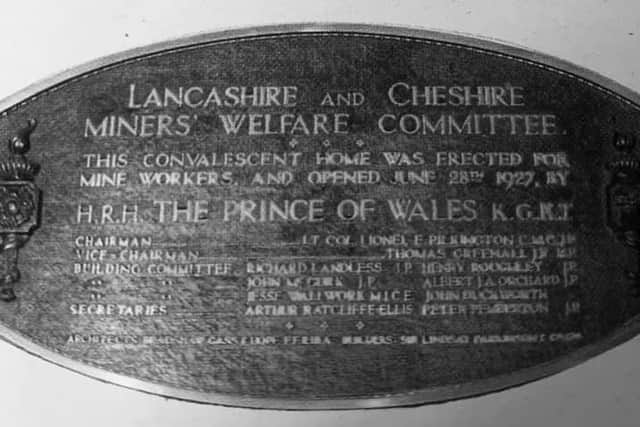Iconic Blackpool building which was home to convalescing miners
and live on Freeview channel 276
It’s interesting to note that before the Miners’ Convalescent Home was constructed, back around the 1920s, a small cottage that was later named Fanny Hall stood on the cliffs opposite the site of today’s Miners’ Home at Bispham.
It was then part of a larger group of cottages and farm buildings and was occupied by the Whiteside family.
Advertisement
Hide AdAdvertisement
Hide AdThe Lancashire and North Staffordshire Miners’ Convalescent Home is a magnificent purpose-built building standing in 6.9 acres of land overlooking the sea on the North Shore of Blackpool.


The foundation stones for the home were laid on June 28, 1925 by Col Pilkington of Haydock Colliery, Mr Thomas Greenall MP and the chairman of the board of management.
Officially opened by the Prince of Wales on the same day as the stone laying, the Lancashire and Cheshire Coal Association negotiated reduced rail fares with the Railway Company to enable up to 30,000 people to attend the event.
When addressing the guests at the opening ceremony, his Royal Highness said: “I have looked forward to seeing this fine convalescent home.
Advertisement
Hide AdAdvertisement
Hide Ad“It is a magnificent building and will, I am sure, prove an inestimable boon to those recovering from sickness an injury.


“It is only right that there should be buildings like these to take those who have fallen by the way in their work in the mining industry and set them on their feet again.”
It is also worth noting on his way home, the Prince stopped at Poulton. He had arranged to meet soldiers and members of the British Legion at Poulton at the market square.
The home took two years to build and cost a reported £150,000 – all the money coming from a levy of 1d per ton on the coal raised in the Lancashire and Cheshire coalfields.
Advertisement
Hide AdAdvertisement
Hide AdThe unique history of the home could be seen in a series of commemorative plaques which did adorn the home’s foyer.


The grade two listed building was built by Sir Lindsay Parkinson and Co, for the Lancashire Miner’s Welfare Fund, and eventually had beds for 132 male miners.
It had been designed by Bradshaw, Gass, and Hope between 1925 and 1927, and originally consisted of 110 bedrooms which the management boasted of offering “hotel standards, with each room having its own washing facilities plus good food and cheerful company”.
Initially the home was for men only, so if they brought their wives with them, the wives stopped in the local boarding houses and then met at the gates daily.
Advertisement
Hide AdAdvertisement
Hide AdMuch later, bungalows were built in the grounds so that the wives could come and stay with their husbands. Those bungalows were eventually demolished in 2003, making way for the new developments called Admiral View and Admiral Heights.
The home had its own two bowling greens and bowling hut, and there was also a skittle alley (now the underground car park) and a billiard room with three tables.
An advert at the time, stated the convalescent home had the following facilities: “For relaxation there is a picturesque sun lounge, two television rooms, a handsome library and a writing room.
“For the sporting minded there is a superb games room equipped with two full-sized snooker tables and a dart board, there is a bowling green in the grounds.
Advertisement
Hide AdAdvertisement
Hide Ad“There is a fully stocked medical surgery and medical trained assistance is on hand, a local doctor provides any necessary back up.
“The home is open from the beginning of April to the middle of December and offers full board accommodation for 155 people in comfortable single or double rooms.
“Extra facilities have also been added in the form of three bungalows for paraplegic mineworkers which now offer three bedroom family accommodation.
“The staff at the home pride themselves on a welcoming and cherry attitude.
Advertisement
Hide AdAdvertisement
Hide Ad“If you want good food, facilities and a friendly environment it’s got to be the Blackpool Miners’ Home!”
Further dates of note have the following snippets:
* May 23 1955 – three bungalows for paraplegic mineworkers opened in the grounds providing a valuable extension for disabled pitmen.
* April 7th 1976 – completion of a big home improvements scheme.
The work had been started four years earlier and had included the conversion of dormitories on the second floor into single room accommodation. Further space was also provided in the former staff quarters on the third floor.
Advertisement
Hide AdAdvertisement
Hide Ad* November 5th 1977 – National Coal Board chairman, Sir Derek Ezra, unveiled a plaque to commemorate the 50th anniversary of the Home and the merging of the facilities.
* April 9th 1988 – Celebration of the Home’s 60th Anniversary and the official opening of the new Lancashire Paraplegic Miners Centre.
A special china plate had been produced to celebrate the opening; the limited plates were available from the secretary.
The Miners’ Home was eventually forced to closed to patients in 1987, following the long-term decline of the mining industry across the country.
Advertisement
Hide AdAdvertisement
Hide AdOriginally put on the market in 1996 through Blackpool estate agents Bentley Higgs for £2.5million, as time went on the asking price gradually dropped.
Work began on rebuilding the home as private luxury apartments in 2004 – these were then called Admiral Point.
I remember attending, with my mother Kath Gregson, an open day at the home that was organised for the local residents in early 2001.
The queue to gain entry was halfway down the promenade when we arrived, and I admit I was surprised to see so many people interested in the local heritage landmark. However, I felt extremely privileged that I and others had the opportunity to have one last look around before renovation and change took over.
Comment Guidelines
National World encourages reader discussion on our stories. User feedback, insights and back-and-forth exchanges add a rich layer of context to reporting. Please review our Community Guidelines before commenting.